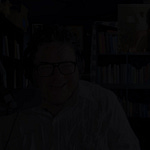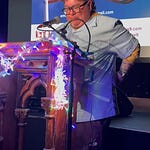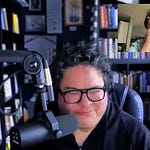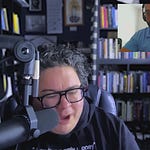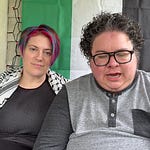Dear Substack Community: It’s Saturday, again, which means I sit down and hit publish! It’s a free write day for me that is less curated; these posts are less polished; there may, in fact, be typos! I’m unraveling from the perfectionism that white supremacy culture demands. I’m just showing up and being me and trying to reduce harm at every turn. My therapist tells me I’m integrating right now. It is painful and taxing.
Grief often emerges when there is space for grief to emerge.
That’s what’s happening for me right now. It’s taken me 10 years after completing my PhD to find time and space to settle. I didn’t know I needed to settle, though I did know I needed my own space. I remember telling a lover that I didn’t want to settle down with anything but a good book, and I was in a particular time of my life of living life on the road; being in a new town every other day; sleeping on couches and in hotel rooms. I wasn’t looking to settle down with anyone or anywhere. I had an apartment in Nashville where I never was. I never really had my own space to unfurl. Now, living in Alfred, I am finding the spaciousness to unfurl. I remain grateful for this land, and look forward to participating in the work of repairing ourselves and the land, so that we might plant seeds for another possible world to emerge.
Two years before I finished my PhD, I was on the job market. I made the short list at Union Theological Seminary and it was the first time I wore a suit. I had so much gender euphoria. This was before I was able to medically transition; my Transness was still emerging. I was in a relationship that didn’t support my transition and so things were stifled and have been stifled, but finishing the PhD opened something for me.
It was like I felt a new sense of freedom. I can’t describe how the weight had been lifted! I was suddenly freed from the trappings of a PhD program, but still deeply tethered to a system of exploitation and domination. It has taken me 10 years to see fully—to see clearly—to see the painful truth of how I am socialized and how I have been socialized.
And yet, something in me began to stir—something beyond compliance, beyond critique. I didn’t want to fix the system anymore. I wanted to get free. That’s when I found the language of fugitivity—not as running away, but as moving differently, living otherwise, becoming ungraspable. Fugitivity offered me a glimpse of life beyond the scripts I’d been handed. It wasn’t about abandoning thought or scholarship, but about refusing the terms under which I’d been asked to perform it.
But fugitivity isn’t just about resistance; it’s about finding another way to move, to live, to breathe. It’s about refusing capture while still inhabiting the world. Exile, too, carries this doubleness—both loss and possibility, both displacement and discovery. When I left behind the entanglements of academia’s prestige economy, I thought I had stepped outside the system, but I was only beginning to understand how deep its roots ran in me. And yet, here in Northern Appalachia, settled but not settled, I am learning what it means to be fugitive in place. To build something off the grid of expectation. To craft a life not as an escape, but as a refusal to be consumed.
Fugitivity is not just intellectual; it is spiritual, embodied, and queer. It is slipping through the cracks of what was supposed to define me. It is a practice of subversion and becoming—one that resists finality, that lives in the unfinished, that moves with the wildness of the Spirit. If exile is the wound, fugitivity is the movement that makes healing possible—not by returning to what was, but by forging new ways of belonging, ways that can’t be mapped or measured, only lived.
Being exiled to the North has felt like a particular process in becoming. I am living in a hyper-colonized site of empire, Northern Appalachia. Similar to the American South, both northern and southern Appalachia are deeply entangled in the afterlives of colonization. I am exiled to this place, and yet, this place is teeming with life. The edges of the edges are where multiple sites of becoming are emerging. To be otherwise here means to refuse the logics of empire, to move fugitive through a landscape that was never meant to hold this kind of life. It means learning from the land itself—how roots persist underground, how forests reclaim what was taken, how the margins hum with possibility.
Now, reflecting on being done with my PhD for almost 10 years, I am turning inward. I am returning to self, so that I can nurture what is and tend to what is emerging. But turning inward is not an escape; it is the work of repair. As Prentis Hemphill teaches, healing is not just personal—it is political. Repair is not about restoring what was, but about mending in ways that make new futures possible. To do the work of politicized healing is to sit with rupture, to feel what has been broken, and to refuse the lie that harm must be inherited. It is to hold space for emergence—not just in myself, but in the worlds I touch.
“It’s through an orientation toward healing and repair for ourselves and others that we recover our capacity for feeling, for relationship, and, with that, the ability to strengthen our bonds and work together.”
Prentis Hemphill
What It Takes to Heal: How Transforming Ourselves Can Change the World
When I am thinking about repair, I am thinking about harm reduction. Repair is not about restoring what was, but about creating conditions where something new can grow. It is a refusal to let harm have the final word. It is an insistence that we are not only shaped by what has been broken, but by the ways we choose to tend to the fractures.
For me, this work of repair begins in the quiet places—where I listen to my body, where I notice what is still tender, where I let grief and joy exist side by side. It extends outward, into the relationships I nurture, into the way I show up for my community, into the spiritual spaces I help to hold. Repair is never just personal; it is the slow, daily labor of reweaving the world.
It was Steve Long who opened me up to the Jewishness of Jesus and the Jewish commandment to repair the world. I first have to repair myself, so that I can repair the world. Gloria Anzaldúa said, I change myself, I change the world, and I am endeavoring to change myself, so that my practices are not mirroring the dominant culture. But what does repair look like outside the rigid frameworks of dominance and control? Queer ecologies offer another way of imagining: repair not as restoration to some original state, but as a living process of adaptation, mutation, and interdependence. In the forest, there is no single path to healing—there are only relationships, networks of fungi threading unseen beneath the soil, trees communicating across vast distances, roots entangled in ways that sustain life. The work of repair, then, is not about returning to an imagined wholeness, but about learning how to become with—to mend through connection, to let what is damaged open into new possibility.
I want to be like the mycelium, weaving repair beneath the surface, breaking down what no longer serves, making nutrients available for new life. I want to practice repair like the wetlands, absorbing the floods of harm without being consumed, transforming the excess into something life-giving. What if healing is not about erasing the rupture but about tending to what emerges from it?
What if Jesus moved like the mycelium—unseen yet profoundly connective, breaking down the decayed structures of empire and nourishing new life beneath the surface? His ministry was not about restoring a lost purity but about creating conditions for something new to emerge. He refused the rigid, exclusionary logics of the dominant culture and instead traced unexpected pathways of healing, belonging, and becoming.
Jesus practiced a kind of ecological repair—not fixing people to fit within oppressive systems, but revealing the ways they were already whole, already connected to a divine web of life. He touched the untouchable, dined with the excluded, spoke in stories that tangled together heaven and earth. He healed not by erasing wounds but by making space for transformed life to grow from them. When he breathed on his disciples after the resurrection, it was not a return to what was, but the beginning of something uncharted—an invitation into fugitive, adaptive, entangled life.
So when I think about repair, I think about Jesus moving in the cracks, showing us how to compost the bullshit of empire and cultivate a world where healing is not about perfection, but about interdependence. To follow Jesus is not to mirror the dominant culture, but to learn how to move with the wisdom of the wild, to repair not by restoring but by creating new, life-sustaining networks of care.
This repair work that I am leaning into is what the cosmos is calling us all to do. The stars collapse and are reborn. Forests burn and regenerate. Rivers reroute. Nothing remains unchanged—and yet everything is interconnected. The invitation is not just to mend ourselves in isolation, but to recognize that our healing reverberates outward. What if our personal repair is a signal flare to others? What if every act of healing is also an act of resistance, an act of collective becoming?
To mend ourselves is not to perfect ourselves, but to become more attuned—to our wounds, yes, but also to our longings, to our joy, to our capacity to hold space for others. And perhaps the invitation to others is not through preaching or convincing, but through presence. Through making visible what it looks like to live aligned with the rhythm of repair. Through the awkward, tender, beautiful work of practicing new ways of being—together.
What does it mean to participate in cosmic repair? To align our lives with the gravitational pull toward healing rather than harm? The cosmos itself is in a constant state of renewal—stars collapse so that new light may form, planets shift their orbits in a celestial dance of tension and release. Even the moon, in her cycles, teaches us that to wane is not to disappear, but to prepare for rebirth. Can we learn to trust the rhythm of becoming? Can we mend ourselves the way the cosmos mends itself—by surrendering to change, by leaning into the cycles of breaking and renewal, by honoring the forces that pull us toward transformation?
But to repair is not just to believe in change; it is to practice it. And practice requires commitment, repetition, and a willingness to move differently in the world. So I invite you: What is your practice of repair? How are you tending to your own becoming so that you might help tend to the becoming of the world? Maybe it’s sitting with your grief instead of numbing it. Maybe it’s learning to listen more deeply. Maybe it’s touching the earth, running your fingers through soil, remembering that healing does not happen in isolation.
Find a practice. Make it tangible. Let it be small at first, like a seed in the dark, knowing that in the cosmos—and in you—nothing remains unchanged.
Paz, —Roberto Che Espinoza+
Day 24: The Power of Silence
Jesus did not defend himself before Pilate. Sometimes the most radical thing we can do is refuse to engage in the world’s power struggles. When might silence be an act of trust and resistance?




